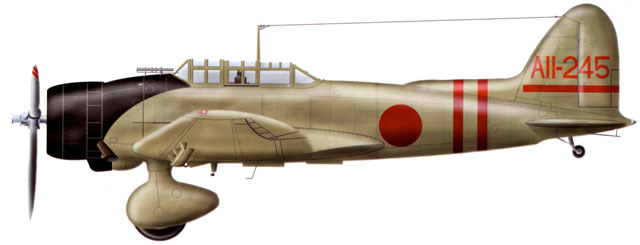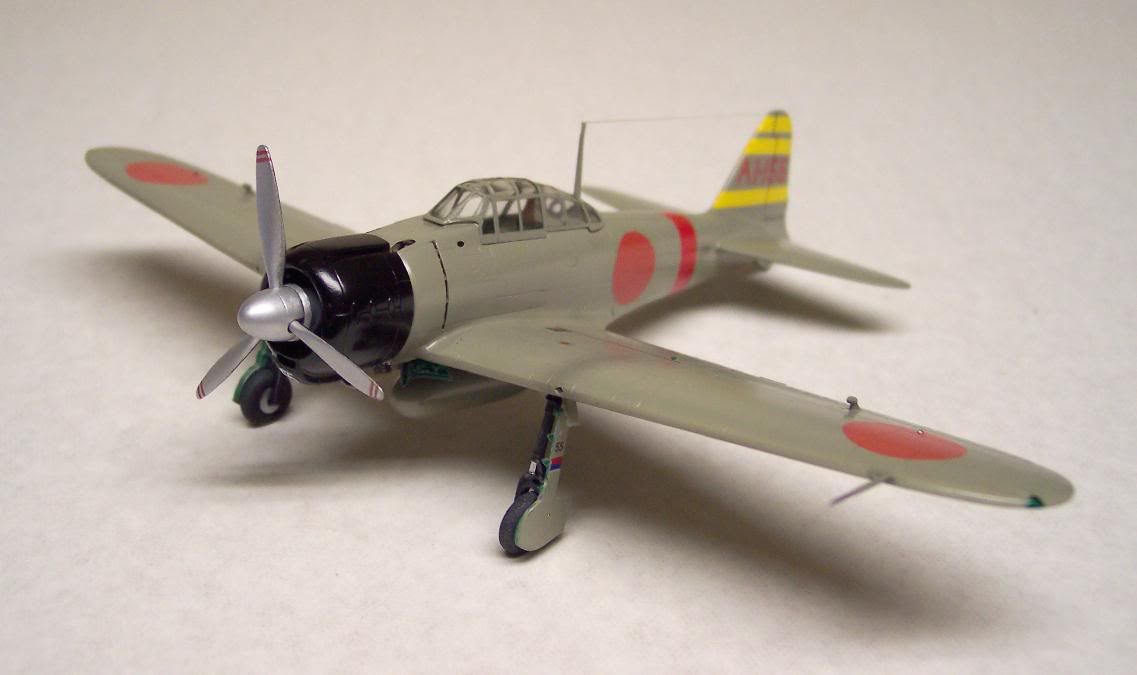Kate/Val paint schemes
Fri Jul 15, 2011 12:46 pm
So back in my youth I used to have a WWII book that had in and amongst the actual photographs, artists renditions of paint schemes and such of aircraft and armor used in whatever battle was being addressed in that chapter. When covering the attack on Pearl Harbor, the paint schemes for the IJN Kates and Vals were kind of a yellowish-orange in color, with black cowlings and the regular meatball markings.
My understanding has always been that the Kates were a dark green and the Val's were white/grey at Pearl Harbor.
Does anyone know where/when the yellowish-orange paint schemes were ever used by the IJN?
My understanding has always been that the Kates were a dark green and the Val's were white/grey at Pearl Harbor.
Does anyone know where/when the yellowish-orange paint schemes were ever used by the IJN?
Re: Kate/Val paint schemes
Fri Jul 15, 2011 1:06 pm
I believe the IJN's standard orange color was for experimental/prototype and training aircraft.
Mike
Mike
Re: Kate/Val paint schemes
Fri Jul 15, 2011 2:36 pm

The above illustration is from Eduardo Cea's "Japanese Military Aircraft: The Air Force of the Japanese Imperial Navy, Carrier-based aircraft, 1922-1945 (I), page 38. The same color is used on illustrations of Pearl Harbor Zeros. I've tried to match the screen image to the printed one as closely as possible. Is this the coloration you were thinking of? Illustrations of Pearl Harbor Kates in the same work show the dark green fuselages. Of course, this is just one source.
Randy
Re: Kate/Val paint schemes
Fri Jul 15, 2011 8:48 pm
Possibly this is what you are thinking of? From the carrier Shokaku and participating in the Pearl attack.

Re: Kate/Val paint schemes
Sat Jul 16, 2011 1:06 am
I think I have the same (or a simlar) book. It dates from the late 60s/early 70s, when research of Japanese colors and markings was still in its infancy. Many reports from witnesses described the Pearl Harbor attackers as being "golden" or even "yellow" colors. Research indicates that the Vals and Zeros were painted a tannish-gray (the exact color is still the subject of some debate) which could have looked yellowish in the morning sun.
As mentioned above, overall yellow-orange was the standard color used by both the Japanese Army and Navy for experimental, prototype, and training aircraft (the shade used by the Army tended to be more yellow than the Navy color.) As attacks on airfields in the Home Islands intensified later in the war, many trainers and experimentals were given a coat of dark green on the upper surfaces.
The Val model shown above represents a squadron commander's aircraft that had orange sides for recognition. Unfortunately no photos of it exist, just verbal descriptions. I've seen it interpreted as a solid coat of orange, or various flame-like patterns.
Many of the Kates (and a few Vals) received some camouflage on the upper surfaces en route to Hawaii..various combinations of greens and browns, some blotched and some solid colors. Since they were painted individually by the maintenance crews, there wasn't any set standard. Some were apparently painted with deck mops.
Among us modellers, the recommended shades for the "gray" color are either Floquil "Concrete" or Gunze Sanyo's interpretation of Luftwaffe RLM 02 "gray green." I used the latter color on this Pearl Harbor Zero a few years ago..

SN
As mentioned above, overall yellow-orange was the standard color used by both the Japanese Army and Navy for experimental, prototype, and training aircraft (the shade used by the Army tended to be more yellow than the Navy color.) As attacks on airfields in the Home Islands intensified later in the war, many trainers and experimentals were given a coat of dark green on the upper surfaces.
The Val model shown above represents a squadron commander's aircraft that had orange sides for recognition. Unfortunately no photos of it exist, just verbal descriptions. I've seen it interpreted as a solid coat of orange, or various flame-like patterns.
Many of the Kates (and a few Vals) received some camouflage on the upper surfaces en route to Hawaii..various combinations of greens and browns, some blotched and some solid colors. Since they were painted individually by the maintenance crews, there wasn't any set standard. Some were apparently painted with deck mops.
Among us modellers, the recommended shades for the "gray" color are either Floquil "Concrete" or Gunze Sanyo's interpretation of Luftwaffe RLM 02 "gray green." I used the latter color on this Pearl Harbor Zero a few years ago..

SN